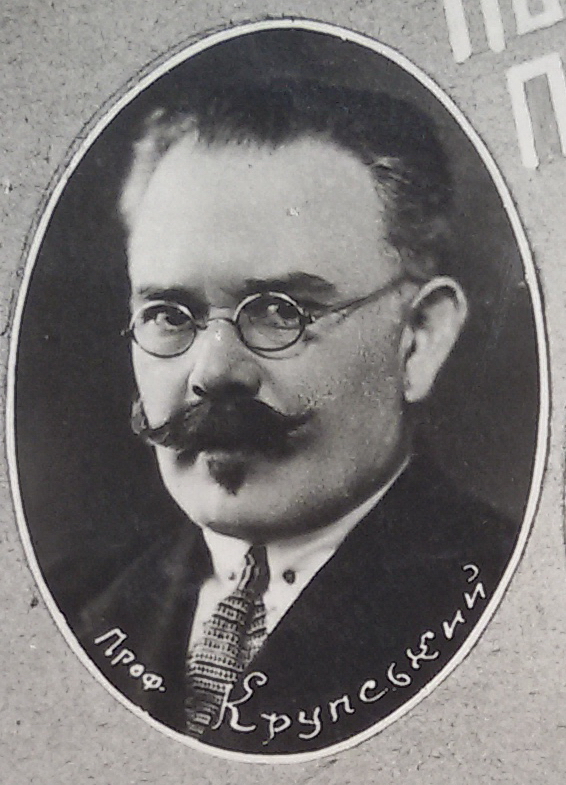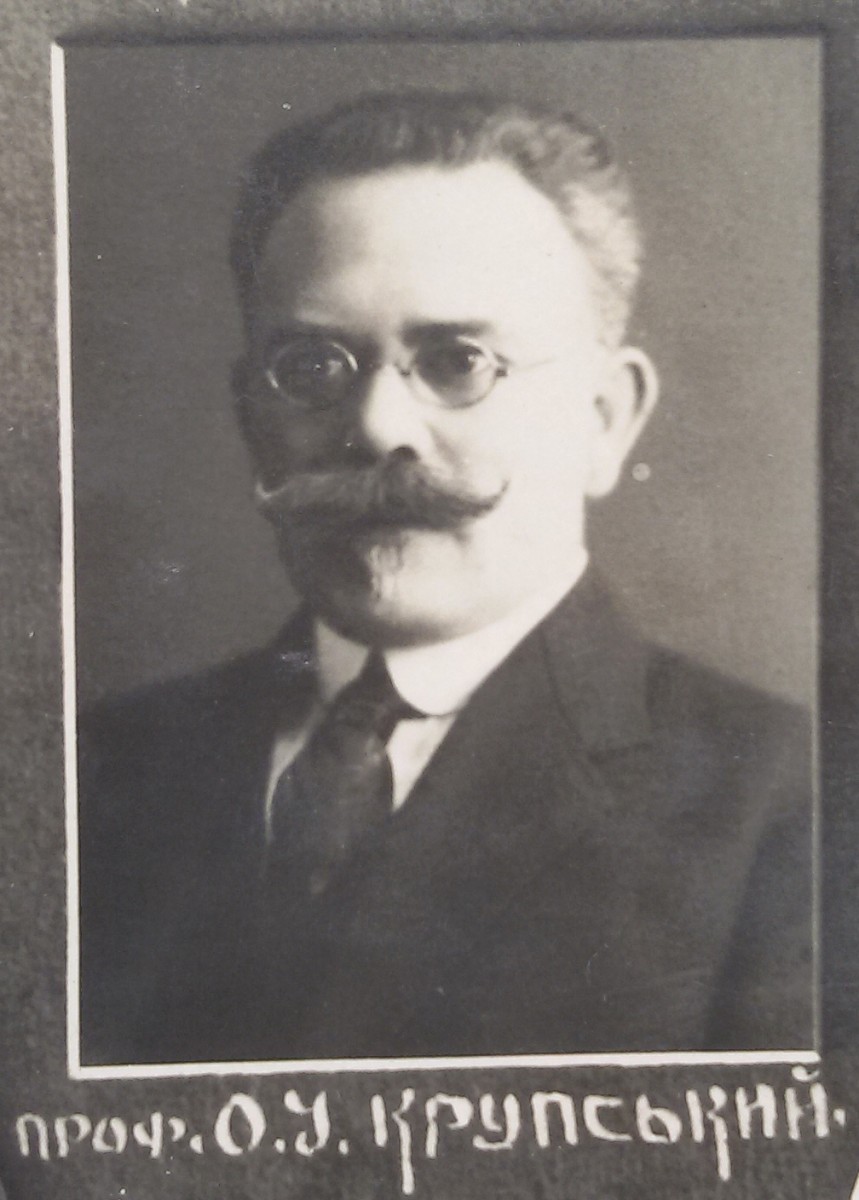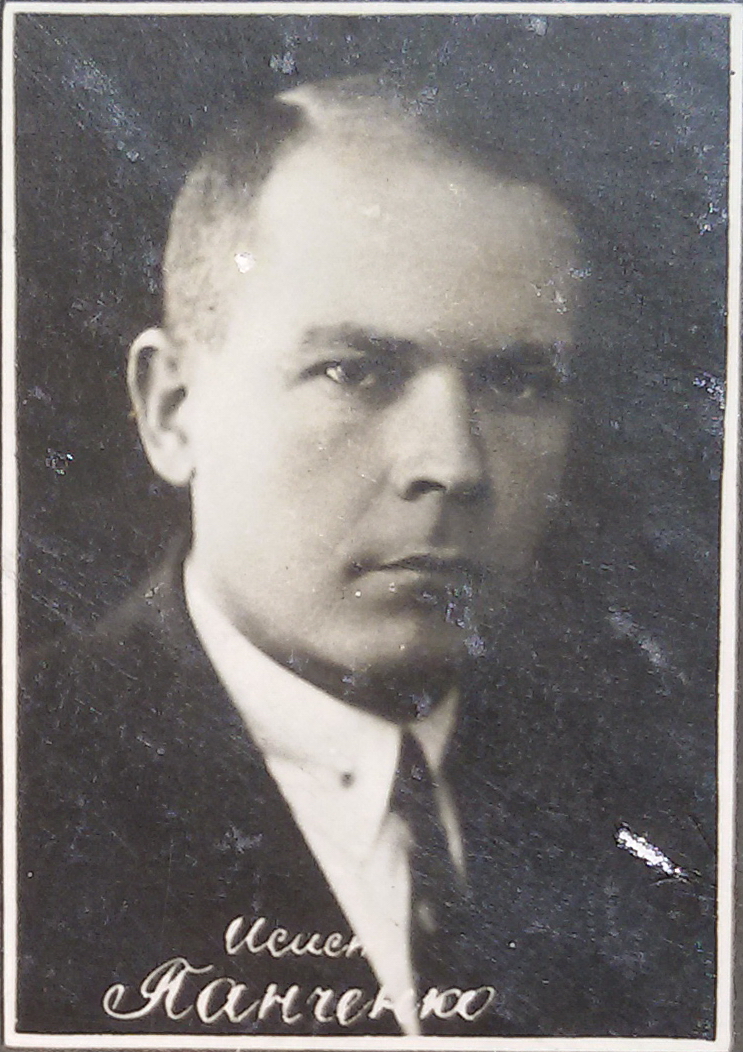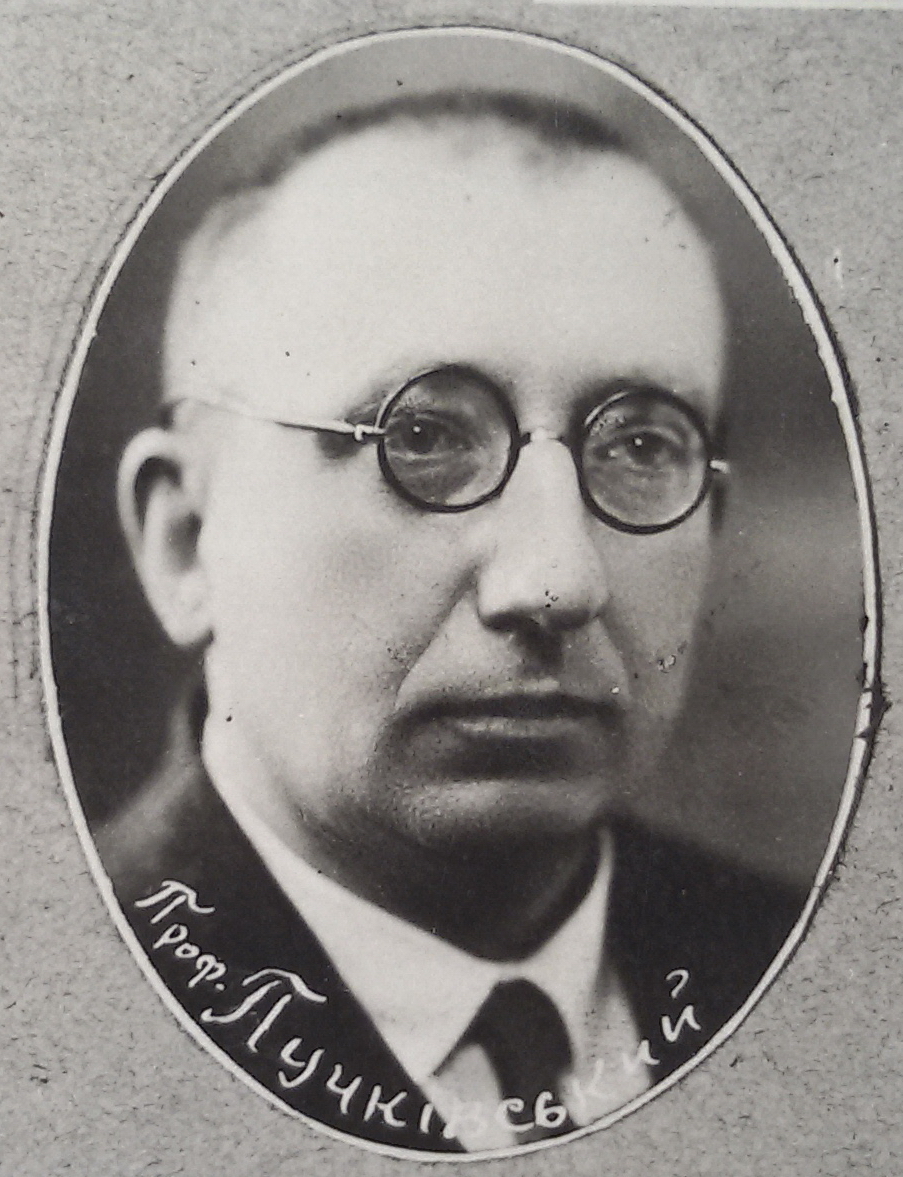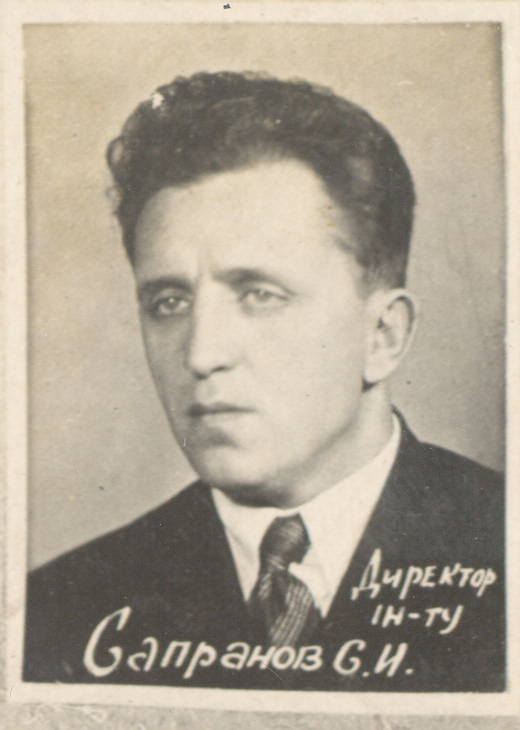KATERYNA AMOSOVA: “GREAT TERROR” IN 1936-38 AMONG ACADEMIC COMMUNITY OF KYIV MEDICAL UNIVERSITY. PART I
“The total lie shall compulsory bring the result – it is important that it would continuously be implemented and cover the maximum amount of people”
- Gebbels
The political repressions in the USSR were the method to punish the people, whom the then party power, which was concentrated in the hands of Y. Stalin, without special evidences, defined as “anti-revolutionary elements” and “people’s enemies” in order to deprive of real or phantom dissidents and to threaten the population in general. The term “cleansing” was used to define such repressions. Such “cleansings” in the bloody history of the USSR were held due to different principles:
- due to national features, for example, anti-Ukrainian “Case of ULU” in 1930, the deportation of Crimean Tatars, Germans and representatives of nations from neighboring countries as “spies” before and during the Second World War. The separate place was occupied by the largest repressions of Jews after the war, which culmination fell on the 50-ies in XX century;
- due to religious beliefs – repressions against priests and churchmen;
- due to social status and occupations: before the war there were the cases against “bourgeois” and their children, peasants (especially rich ones) and intelligence, different cases against “saboteurs” (“Shaktynska case” (1928), cases of Labor peasants’ party (1930), Industrial party (1930), against scientists (“Pulkivska case”), cases against military management, etc.
The special place in the history of political repressions in the USSR is taken by “Cases of doctors”; there were two cases in 1937, and the largest one – in 1950-53. Both were deployed in combination with anti-Semitism.
The accusations were usually based only on the slaunder and confessions of arrested people under tension (including physical one). Before beginning of 1937 the stage political cases were executed as judicial, the part of which were held in open mode, and later when they acquired the mass character – were held without “formalities”.
At the Plenum of CC and CCC in January 1933, after successes in industrialization and collectivization Y. Stalin declared “about consolidation of socialism principle in all spheres of people’s economics” and destruction of “enemy classes”. Hereby he set the thesis about reinforcement of class struggle on the further way “to the complete victory of socialism” as political substantiation for performance of large-scale repressions among population in the USSR. For their implementation in summer of 1934, due to decree from CEC of USSR they established the powerful punishing authority – People’s Commissariat for Internal Affairs (NKVD), which used the murder of famous party leader S. Kirov in December 1934 as a ground for deployment of mass terror against mythic “people’s enemies”.
They started to impose the idea that there were numerous spies – “Japanese-German-Trotskyist agents” and saboteur – “remnants” – nationalists and counterrevolutionaries, filtrated the army, all economical, administrative and party organizations, including their management, and even authorities of NKVD. The purpose of “General cleansing”, which achieved the largest scope in summer of 1937, was the physical abolishment of those ones, who had been deprived of elective rights before and had been imprisoned (kulaks, priesthood, “the former” that is intelligence and “nationalists”) and the full substitution of old party staff, those ones, who organized the repressive events in previous years, for the new, completely controlled ones.
During next year approximately 80% of delegates from previous congress of the party and overwhelming majority of party management in the USSR – from district to republican and “union” one were arrested and/or abolished. In Ukraine from 102 members and candidates into members of CC CP(b)U 100 persons were repressed, from 11 members in Political Bureau of CC – 10. (T. Rafalska).
The “limits” for execution “category I” and imprisonment “category II” of “anti-Soviet elements” in ratio of 3:1 for their implementation during next 4 months were “released” “from the top” to each republic in the USSR. In fact, the great “cleansing” was stopped by Decree from CC AUCP(b) only in November, 1938 that is it lasted for over 15 months. Hereby the heads of NKVD at all levels unilaterally initiated the increase in those “limits” and hurried to report about fulfillment and overfulfillment of the “plan”. As Yu.I. Kundiiev mentions in the book about history of Institute of labor hygiene, 353,074 persons were shot and almost one million (936,750 persons) were arrested only for 1937 in the USSR.
The start of mass repressions was the well-known order No 00447, dd. September, 1937, issued by people’s commissar of NKVD of USSR general commissar of state security M. Yezhov, who substituted the people’s commissar G. Yagoda at this post. This order provided with the mechanism for mass implementation of sentences, canceling the procedural norms and previous arrest warrants. As a result, the destiny of the most arrested people was solved by extrajudicial agencies – special councils, so called “dyads” and “triads” at regional administrations of NKVD consisting of head at administration, secretary at regional committee of party, prosecutor of region (who often did not meet in full composition). Only accusing evidences by arrested people and the confession of one of them were sufficient to pass a sentence by 2 types of extrajudicial authorities. During investigation in cases, for which 2-3 days were allowed, the people under tortures quickly “confessed” in absolutely improbable treacherous activity, imposed by investigators. The “most hostile” people (“category I”) were shot, and the rest ones (“category II”) were imprisoned and sent to the camps of NKVD.
Rather popular were the cases of suicide while waiting for arrest that enabled saving the family members against repressions. Even if they did not arrest the relatives, the family members of “people’s enemies” were dismissed from work, humiliated in every possible way, and the doors of higher schools, proper employment and career growth were closed to the children. The repressions covered the “rows” of NKVD, higher management inclusive. Thus, the people’s commissars of NKVD of USSR G. Yagoda (1938) and “bloody dwarf” M. Yezhov (1940) were consistently shot. As well as the people’s commissars of NKVD of UkrSSR in 1934-37 V. Balytskyy, whom the general prosecutor of UkrSSR in 1922-27 and people’s commissar of education in 1927-33 academician in AUAS M. Skrypnyk called the “guillotine of Ukraine” and his successor in this post in 1937-38 I. Leplevskyy – the very one, who was anxious about “increase in limits” for repressions for Ukraine. V. Balytskyy was repressed and abolished due to the “group case” as to belonging to as if existing right Trotskyist organization in Ukraine together with the higher management of UkrSSR – general secretary of CC CPU S. Kosior, second secretary of CC CPU P. Postyshev, member in CC CPU V. Chubar, then commander of Kyiv military district I. Yakir and many others.
The hit cleansing due to decisions by “dyads” and “triads” was held in 1937 in the concentration camps. So, professors in KMI V. Pidgayetskyy, V. Udovenko and senior assistant – therapeutist and public leader A. Barbar passed on.
In December, 1937 they launched the so-called “anti-zionistic campaign”, but in fact – the state policy of anti-Semitism, which lasted until the death of Y. Stalin in 1953. The example for its implementation may be the data from territoryterror.orq.ua: if in 1935 40% of Jews worked at NKVD of Ukraine, so in 1940 – 4%. 279 participants in mythic “Zionist underground” were arrested in the first half of 1938 in Kyiv and other large cities of Ukraine.
As it is mentioned in the theses of International “Memorial” for honoring the memory about victims of the Great terror in Ukraine on its 70th anniversary (2007): “The thirty seventh year is the giant scale of repressions that covered all regions of Ukraine and each and all layers of population. During 1937-1938 more than 1.7 millions people were arrested due to political accusations, and together with the victims of deportations and sentenced “socially harmful elements” the number of repressed people exceeds 2 millions”.
(http://сensor.net.ua/forun/383301/ukrana_1937yi_rk_velikoqo_teroru)
The “doctors-killers” – professor D. Pletnyov, doctors L. Levin, I. Kazakov et al were separated into an individual group within the loud process against “anti-Soviet right Trotskyism unit” in 1938 in Moscow. Most of them worked at establishments of medical service for party management and top officials. It was the first “Case of doctors”. The second largest case took place in 1953. The purpose of both cases was “two-in-one” – to threaten the medical community and to distract the society from the head of the country to medics. There was no medical establishment that did not feel these cases “on itself”. Kyiv medical institute was not an exception.
In 1937 they started the prejudicial public punishment with the world-known therapeutist professor D. Pletnyov, doctor of the highest management of the USSR and head at department of therapy in Central institute of improvement for doctors in Moscow, in which the doctors from the whole USSR took an active part. The patient, who turned out to be an employee in NKVD, wrote the complaint to NKVD against 65 years old professor. She mentioned that during examination “sadist”-professor as if tried to commit the sexual violence of her. The press was full of blaming speeches by medics from academician to hospital attendant, at numerous meetings of labor collectives. So, for example, the famous professor-therapeutist V. Zelenin blamed D. Pletnyov for “… hidden Black-Hundreders and promotion of fascist ideas in his medical works”, and professor M. Strazhesko, head at department of faculty therapy in KMI, announced the verdict: “He has never been behindhand in moral eminence”. (Citation by O. Bobrov).
All speakers, including colleagues, in their speeches unilaterally appealed to dismiss professor D. Pletnyov from work and to deprive him of his scientific titles before court proceedings and it was made. However, the judgment of closed meeting by Moscow court, which took place in July, 1937, surprised all with unheard soft verdict “two years provisionally”.
Why it happened so it became clear already in 7 months. In March, 1938 D. Pletnyov appeared before the court for the second time as a member in the “gang of doctors-killers” and “supporters of anti-Soviet right Trotskyism unit” due to accusation as if in conscious acceleration of death for famous patients. They were the member in Political Bureau of CC of CPSU V.V. Kuybyshev, head in united Chief administration of State political administration at Council of people’s commissars of the USSR (so-called “OGPU”, which since 1934 was included into NKVD as the Chief administration of state security), successor of F. Dzerzhynskyy, V. Menzhynskyy (his successor became G. Yagoda) and writer M. Gorkyy, as well as his son – M. Peshkov. In fact they all died with “their own death”. The ground for accusation was the data of medical expertise under signatures of 5 professors (!), including favorite pupil of professor D. Pletnyov – professor-therapeutist V. Vynogradov. The colleagues of D. Pletnyov with whom he directly worked – professors-therapeutists V. Zelenin, B. Kogan, E. Gelstein and M. Vovsi also joined to the public persecution. By a twist of fate, to be more precise, Y. Stalin, in 1953 they all with V. Vynogradov received the imprisonment for the second case of “doctors-killers”.
How did the wave of repressions from “great terror” wheel in 1937 among academic community at Kyiv medical institute (KMI)?
Unfortunately, the information about it is very limited.
According to the data of doctor, writer and journalist Yu. Vilenskyy, in July, 1937 the director of the 2nd KMI Serhii Ivanovych Sapronov (1900-1937) was arrested. This institute was established in 1936 on the base of “industrial medical institute”, opened on 1, March, 1931, to train doctors from nurses and doctors without dismissal from work that functioned in departments of multi-field First Kyiv workers’ hospital (former Kyiv Jewish free hospital, now – Kyiv regional hospital). S. Sapronov – graduate from Moscow medical institute, until that appointment he worked at hospital of CC of CPU. He was shot on 4, September, 1937 due to accusation in preparation of terrorist acts against the power.
His successor at this post of director, surgeon Pavlo Ivanovych Shashko (1901-1938) was also sentenced. In his labor biography there was the control for management of training of medical staff at people’s commissariat of health care of the UkrSSR (1935), not long directorship of the second KMI in 1937 and work as a house surgeon at the Institute of clinical medicine, which was headed by M. Strazhesko, before arrest in February, 1938. Due to accusation in membership in anti-Soviet underground, which he acknowledged, was shot in September, 1938 (stalin.memo.ru/names/p 420 htm).
At least two more rectors of medical higher schools of Ukraine were imprisoned for many years in 1937 – Kharkiv – Dmytro Serhiiovych Lovlya and Vinnytsia – Grygoriy Davydovych Brylliant. The latter one was arrested together with the wife – doctor-ophthalmologist from Vinnytsia M. Brylliant-Gutberg. D. Lovlya was lucky to get up and go in 1940, while the destiny of Brylliant’s wife is unknown (Ya. Ganitkevych and P. Pundiy, 2008).
VICTIMS OF POLITICAL REPRESSIONS DURING THE PERIOD OF “GREAT TERROR” IN 1936-38 AMONG ACADEMIC COMMUNITY IN KYIV MEDICAL UNIVERSITY. Part I.
K.M. Amosova
